VW ID.3 vs Fiat Grande Panda – Which one offers the better deal?
Compare performance, boot capacity, efficiency and price at a glance.
Find out which car is the better choice for you – VW ID.3 or Fiat Grande Panda?
Costs and Efficiency:
Looking at overall running costs, both models reveal some interesting differences in everyday economy.
Fiat Grande Panda has a convincingly advantage in terms of price – it starts at 16300 £, while the VW ID.3 costs 28600 £. That’s a price difference of around 12291 £.
In terms of energy consumption, the advantage goes to the VW ID.3: with 14.50 kWh per 100 km, it’s somewhat more efficient than the Fiat Grande Panda with 16.80 kWh. That’s a difference of about 2.30 kWh.
As for range, the VW ID.3 performs significantly better – achieving up to 605 km, about 285 km more than the Fiat Grande Panda.
Engine and Performance:
Power, torque and acceleration say a lot about how a car feels on the road. This is where you see which model delivers more driving dynamics.
When it comes to engine power, the VW ID.3 has a significantly edge – offering 326 HP compared to 113 HP. That’s roughly 213 HP more horsepower.
In acceleration from 0 to 100 km/h, the VW ID.3 is clearly quicker – completing the sprint in 5.70 s, while the Fiat Grande Panda takes 10 s. That’s about 4.30 s faster.
In terms of top speed, the VW ID.3 performs slightly better – reaching 200 km/h, while the Fiat Grande Panda tops out at 160 km/h. The difference is around 40 km/h.
There’s also a difference in torque: VW ID.3 pulls clearly stronger with 545 Nm compared to 205 Nm. That’s about 340 Nm difference.
Space and Everyday Use:
Cabin size, boot volume and payload all play a role in everyday practicality. Here, comfort and flexibility make the difference.
Both vehicles offer seating for 5 people.
In curb weight, Fiat Grande Panda is distinct lighter – 1295 kg compared to 1787 kg. The difference is around 492 kg.
In terms of boot space, the Fiat Grande Panda offers barely noticeable more room – 412 L compared to 385 L. That’s a difference of about 27 L.
In maximum load capacity, the Fiat Grande Panda performs barely noticeable better – up to 1366 L, which is about 99 L more than the VW ID.3.
When it comes to payload, VW ID.3 minimal takes the win – 473 kg compared to 453 kg. That’s a difference of about 20 kg.
Who wins the race?
The VW ID.3 proves to be outperforms in nearly all aspects and therefore becomes our DriveDuel Champion!
VW ID.3 is the better all-rounder in this comparison.
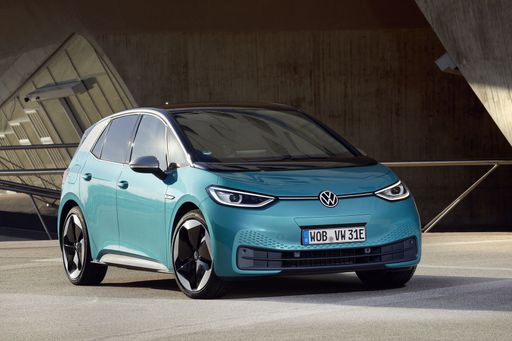
VW ID.3
VW ID.3
The VW ID.3 represents Volkswagen's entry into the world of electric vehicles, offering a modern design that combines functionality with sustainability. Inside, you'll find a spacious and tech-forward interior, providing a comfortable driving experience while maintaining a focus on environmentally friendly materials. The ID.3's performance delivers a smooth and responsive feel on the road, making it a strong contender in the growing electric car market.
details @ Volkswagen
@ Volkswagen
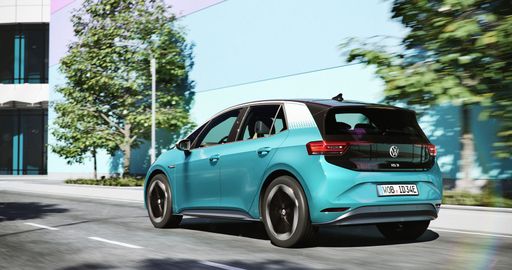 @ Volkswagen
@ Volkswagen
 @ Volkswagen
@ Volkswagen
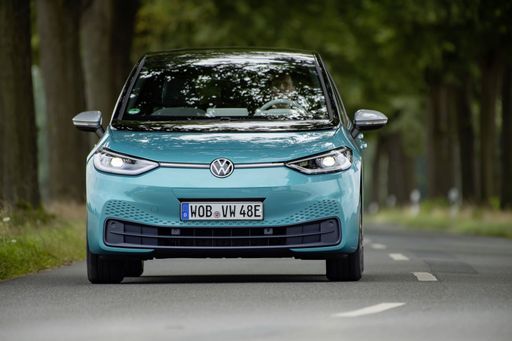 @ Volkswagen
@ Volkswagen
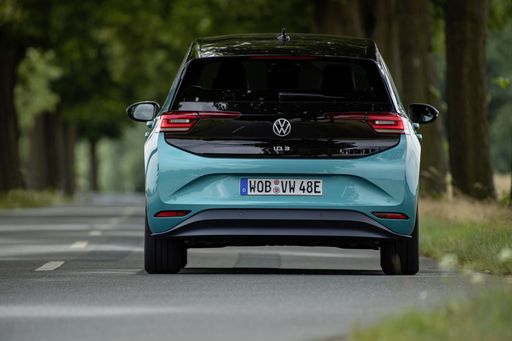 @ Volkswagen
@ Volkswagen
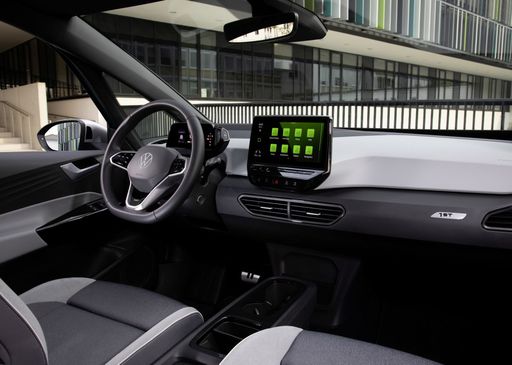 @ Volkswagen
@ Volkswagen
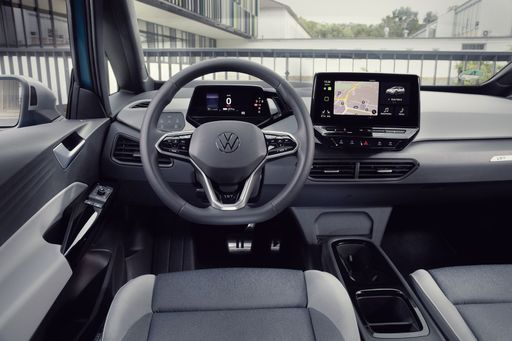 @ Volkswagen
@ Volkswagen
Fiat Grande Panda
The Grande Panda is a delightful blend of practicality and charm, making it a popular choice for urban dwellers and families alike. With its compact design, the car navigates city streets effortlessly while providing ample interior space for passengers and cargo. Its quirky styling and user-friendly features make the Grande Panda not just a mode of transport, but a fun driving experience.
details

|
|
|
|
|
Costs and Consumption |
|
|---|---|
|
Price
28600 - 49300 £
|
Price
16300 - 24000 £
|
|
Consumption L/100km
-
|
Consumption L/100km
5.1 - 5.7 L
|
|
Consumption kWh/100km
14.5 - 15.8 kWh
|
Consumption kWh/100km
16.80 kWh
|
|
Electric Range
383 - 605 km
|
Electric Range
320 km
|
|
Battery Capacity
52 - 79 kWh
|
Battery Capacity
43.80 kWh
|
|
co2
0 g/km
|
co2
0 - 130 g/km
|
|
Fuel tank capacity
-
|
Fuel tank capacity
44 L
|
Dimensions and Body |
|
|---|---|
|
Body Type
Hatchback
|
Body Type
SUV
|
|
Seats
5
|
Seats
5
|
|
Doors
5
|
Doors
5
|
|
Curb weight
1787 - 1993 kg
|
Curb weight
1295 - 1554 kg
|
|
Trunk capacity
385 L
|
Trunk capacity
361 - 412 L
|
|
Length
4264 mm
|
Length
3999 mm
|
|
Width
1809 mm
|
Width
1763 mm
|
|
Height
1564 mm
|
Height
1581 - 1629 mm
|
|
Max trunk capacity
1267 L
|
Max trunk capacity
1315 - 1366 L
|
|
Payload
437 - 473 kg
|
Payload
353 - 453 kg
|
Engine and Performance |
|
|---|---|
|
Engine Type
Electric
|
Engine Type
Petrol MHEV, Electric, Petrol
|
|
Transmission
Automatic
|
Transmission
Automatic, Manuel
|
|
Transmission Detail
Reduction Gearbox
|
Transmission Detail
Dual-Clutch Automatic, Reduction Gearbox, Manual Gearbox
|
|
Drive Type
Rear-Wheel Drive
|
Drive Type
Front-Wheel Drive
|
|
Power HP
170 - 326 HP
|
Power HP
100 - 113 HP
|
|
Acceleration 0-100km/h
5.7 - 8.2 s
|
Acceleration 0-100km/h
10 - 11.5 s
|
|
Max Speed
160 - 200 km/h
|
Max Speed
132 - 160 km/h
|
|
Torque
310 - 545 Nm
|
Torque
122 - 205 Nm
|
|
Number of Cylinders
-
|
Number of Cylinders
3
|
|
Power kW
125 - 240 kW
|
Power kW
74 - 83 kW
|
|
Engine capacity
-
|
Engine capacity
1199 cm3
|
General |
|
|---|---|
|
Model Year
2024 - 2025
|
Model Year
2025
|
|
CO2 Efficiency Class
A
|
CO2 Efficiency Class
D, A
|
|
Brand
VW
|
Brand
Fiat
|
Is the VW ID.3 offered with different drivetrains?
Available configurations include Rear-Wheel Drive.
The prices and data displayed are estimates based on German list prices and may vary by country. This information is not legally binding.
